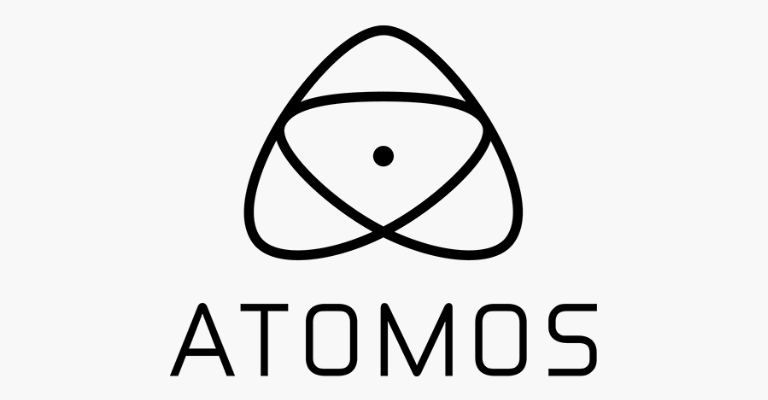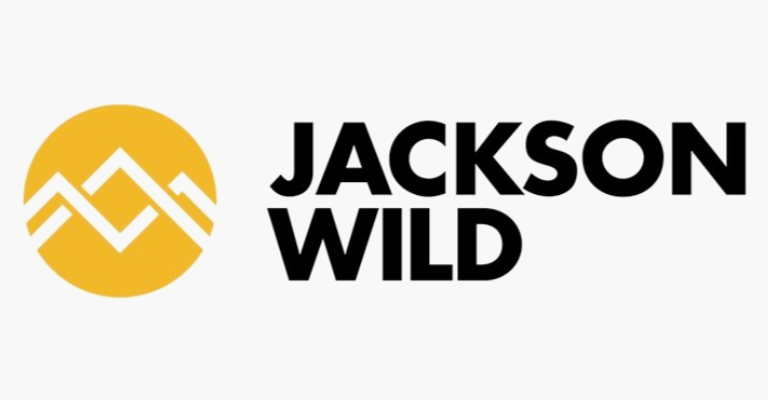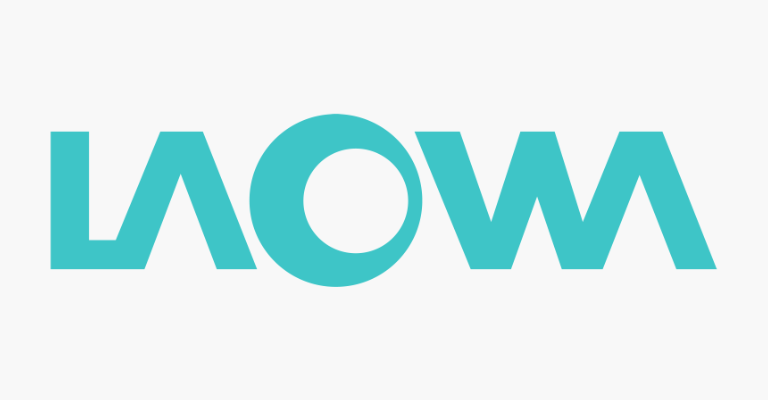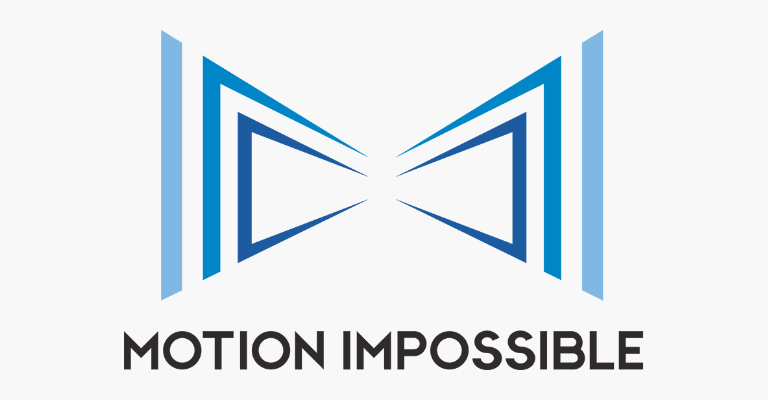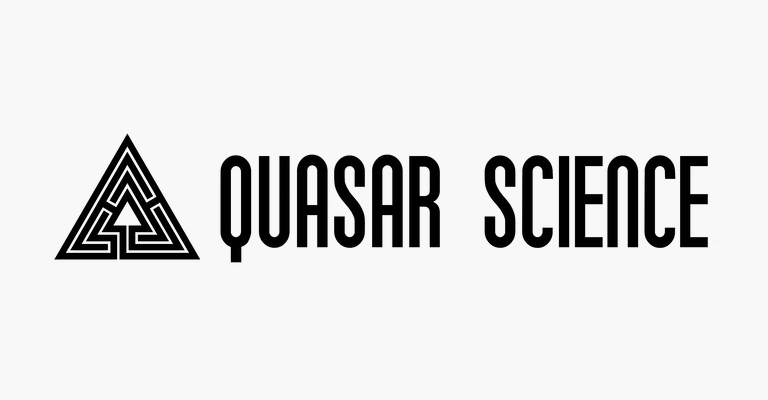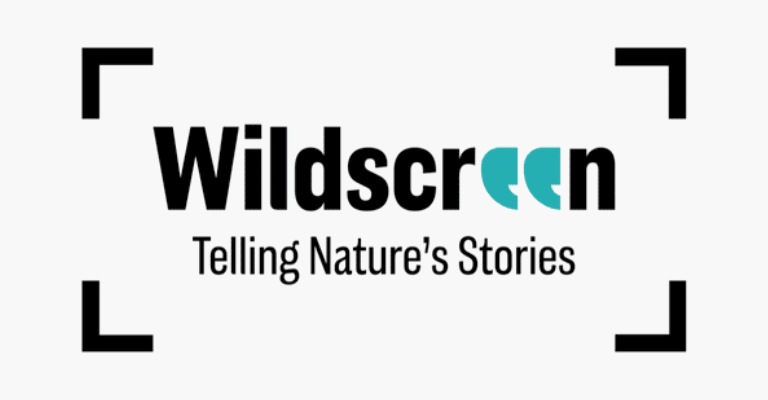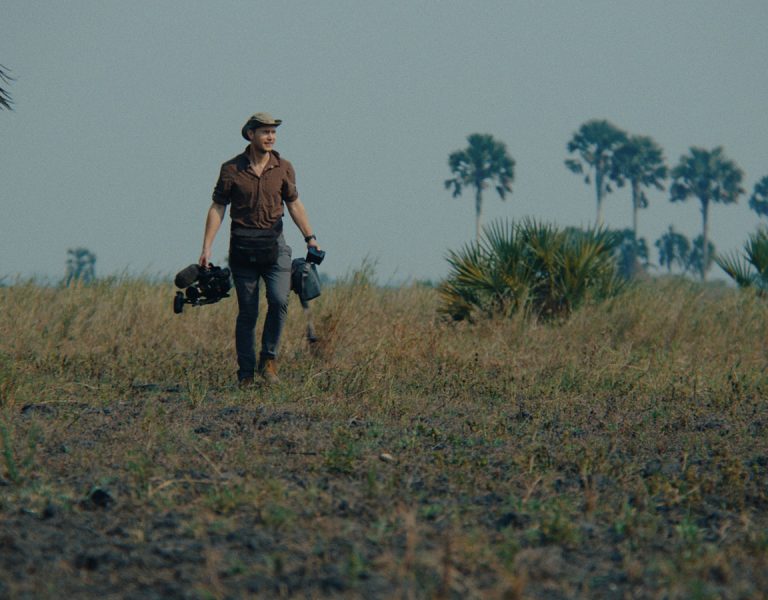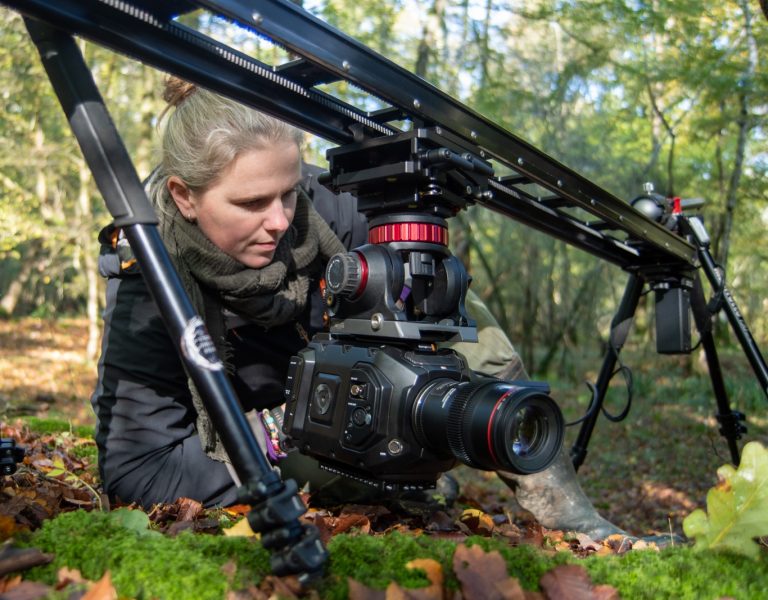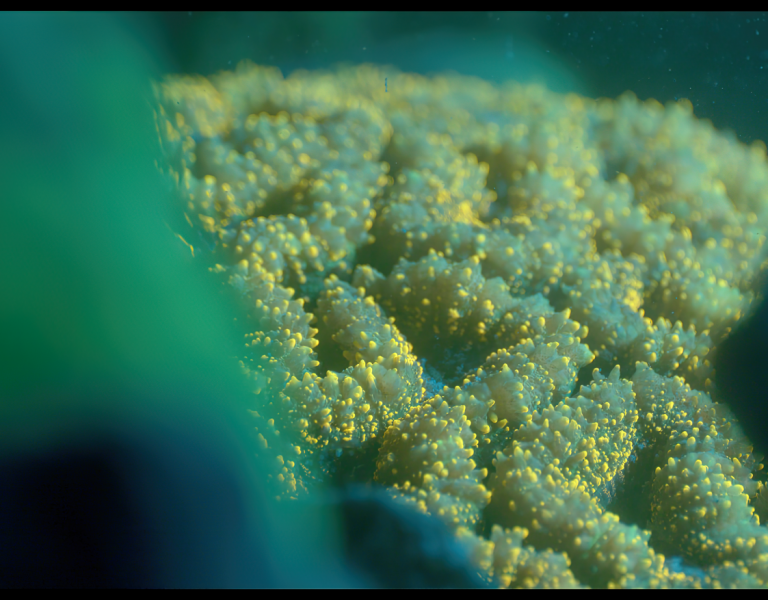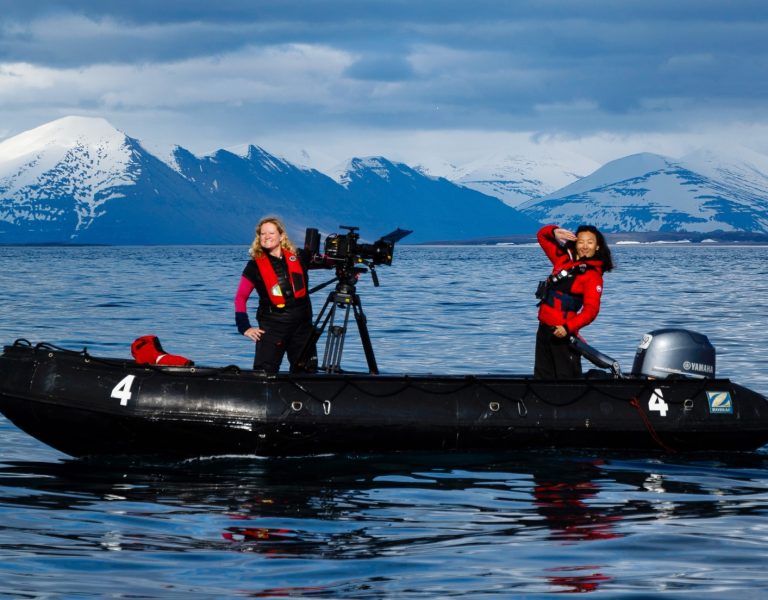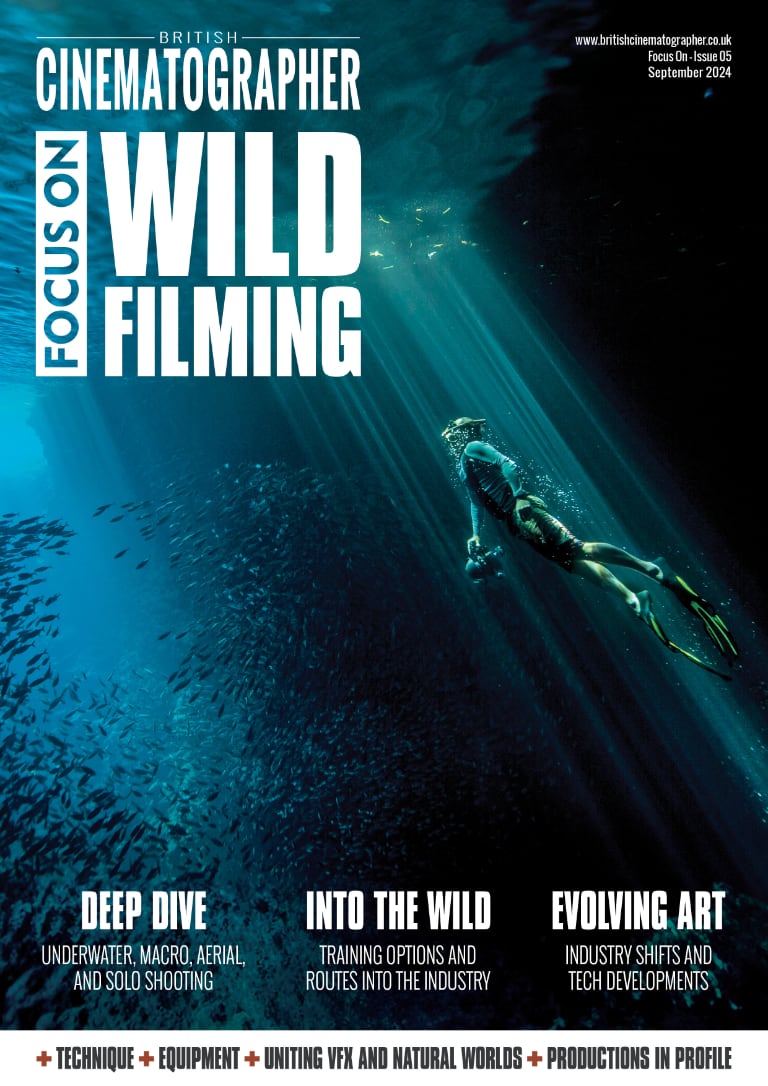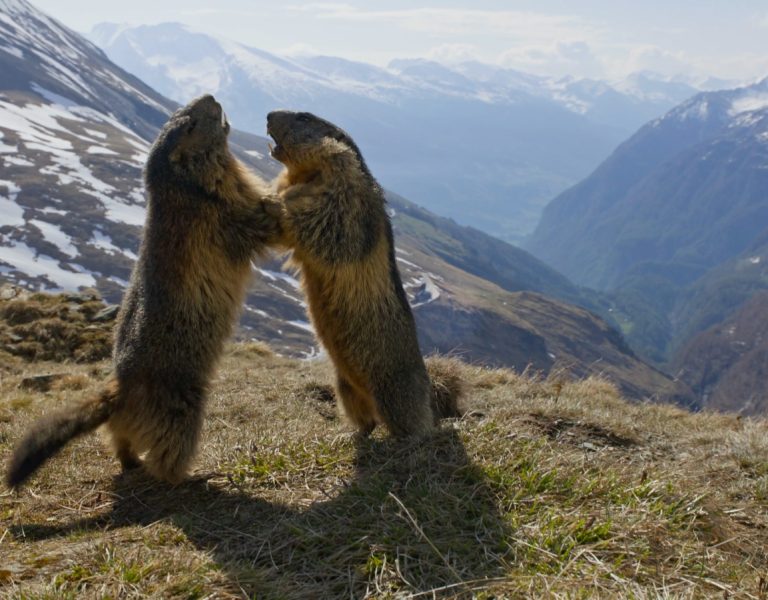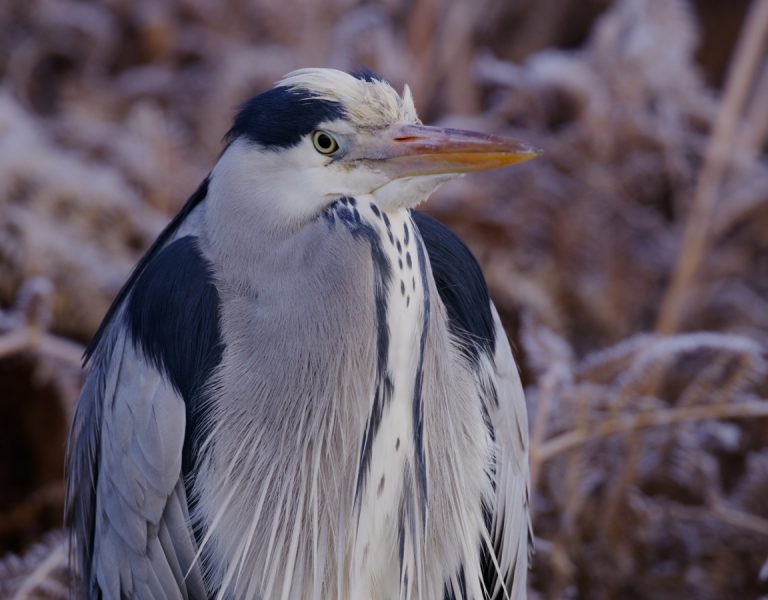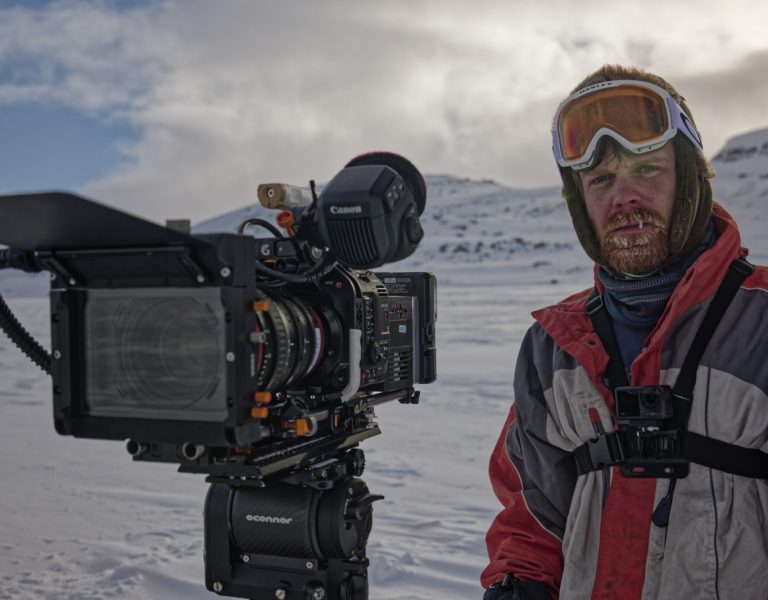Lead image credit: Phil Streather
NO TEA PARTY
The traditional approach to filming chimpanzees and many other species in their natural habitat is to use a large camera and a very long lens necessitating a large and heavy tripod, but Oscar-winning director James Reed (My Octopus Teacher) and cinematographer Ben Sadd (Jago: A Life Underwater; Frozen Planet II) wanted to do it differently.
“The traditional long lens set up has worked well in the past but it is also cumbersome and slow,” explains Sadd. “We wanted to capture some amazing, intimate animal behaviours.”
Sadd is known for the cinematic look he brings to his work, across documentary, advertising and adventure films, as well as his eagerness to get stuck in.
Taking cues from 2017’s Rise of the Warrior Apes (directed by Reed with scenes photographed by Sadd), largely composed of archive footage filmed over 23 years by scientists on handheld cameras, the pair decided to research kit that would enable a more nimble and close quarters approach for new Netflix docuseries Chimp Empire.
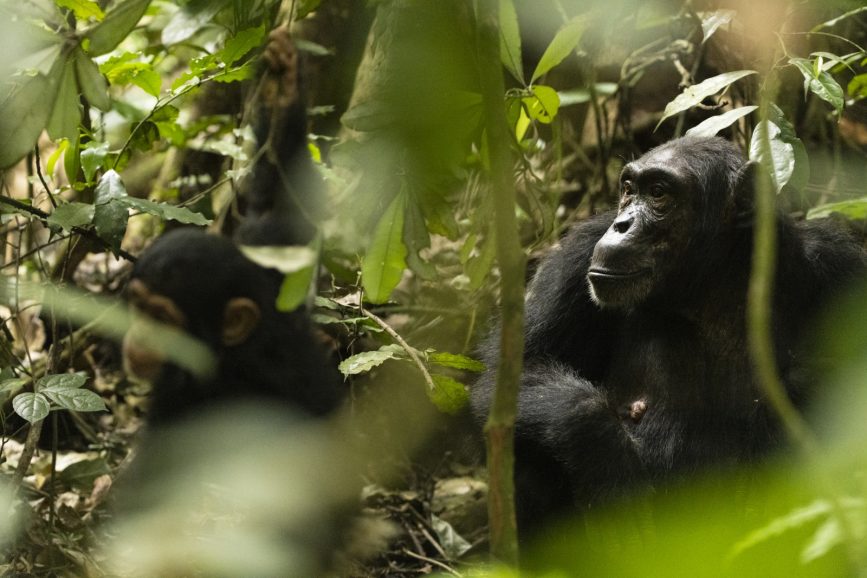
“The aim was to be as intimate as possible with the animals as possible while meeting Netflix deliverables. That led us to develop a new kit list based around camera, lens and tripod which we took out every day.”
Like Warrior Apes, Chimp Empire is a KEO Films and Underdog Films production which returns to the forests of Ngogo, Uganda and follows the largest group of chimpanzees ever discovered. The four part series explores the chimp’s complex society and how their ambition and that of neighbouring rivals threaten to destabilise their empire. It is narrated by Academy Award Winner Mahershala Ali.
The documentary was shot largely on EOS C300 Mark III, a camera light enough to be carried whilst still fulfilling Netflix 4K delivery specifications.
As lead cinematographer Sadd was on five out of the six shoots, spending about seven months there in total over a year and a half, in rotation with other camera teams. Each DP shot alongside a local Ugandan field assistant with expert knowledge of the chimps’ behaviour. They also became tripod and camera assistants both walking up to 20km a day with a 17kg backpack. Each of the camera operators used a package based on the C300 but tailored to the individual strengths of the operator, whether handheld, gimbal, long lens or a combination of them all.
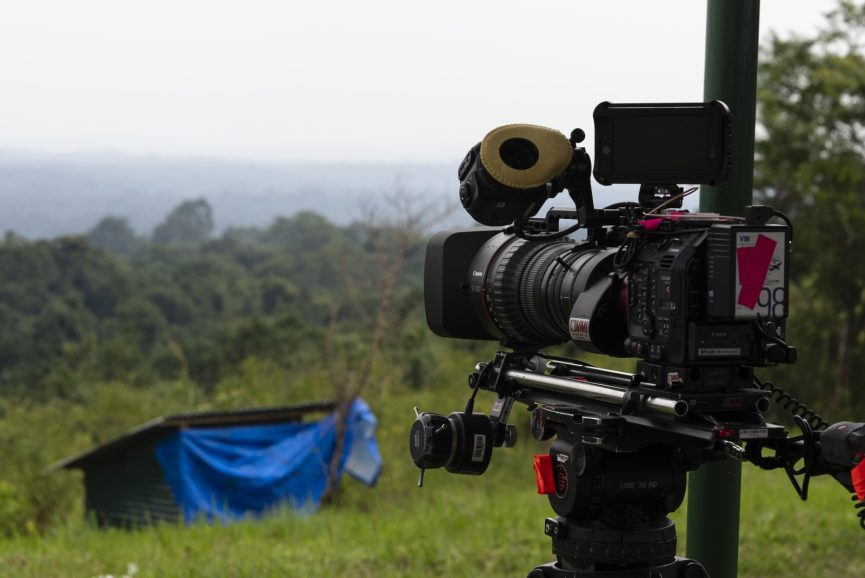
Sadd explains, “A lot of wildlife photography is done on RED which is a great camera but required you to take ten extra batteries with you for the day. The C300’s power consumption is much leaner so we needed just three batteries and that instantly dropped four kilos of weight that you have don’t to take into the forest with you.”
The main lens was a Canon CN10X25 25mm-250mm with a CN20 for close-up details mounted to an OConnor Ultimate 1040 fluid head. Suitable for payloads from 0 to 45 lbs, the Ultimate 1040 brings the same quality build, precision, and ultra-smooth fluid camera movement found on the larger OConnor 2575 and 2560 heads to a smaller system that enables cinematographers to use lighter camera setups without compromise.
He combined the Ultimate 1040 head with OConnor’s carbon fibre flowtech100 tripod. With its revolutionary quick release brakes, the tripod could be rapidly deployed and quickly adjusted for the variable terrain.
Sadd says, “Given the speed at which chimps move you’ve got to be quick to move with them – again and again. So that lighter weight set-up of the 1040 and the speed of the flowtech legs was totally essential to filming our chimps.
“’Because you’re shooting at hip level you can’t use an EVF so we used SmallHD 502 monitors. This also meant that our field / camera assistant can see what we were filming from behind and then suggest other shots, anticipating better positions to capture behaviour.”
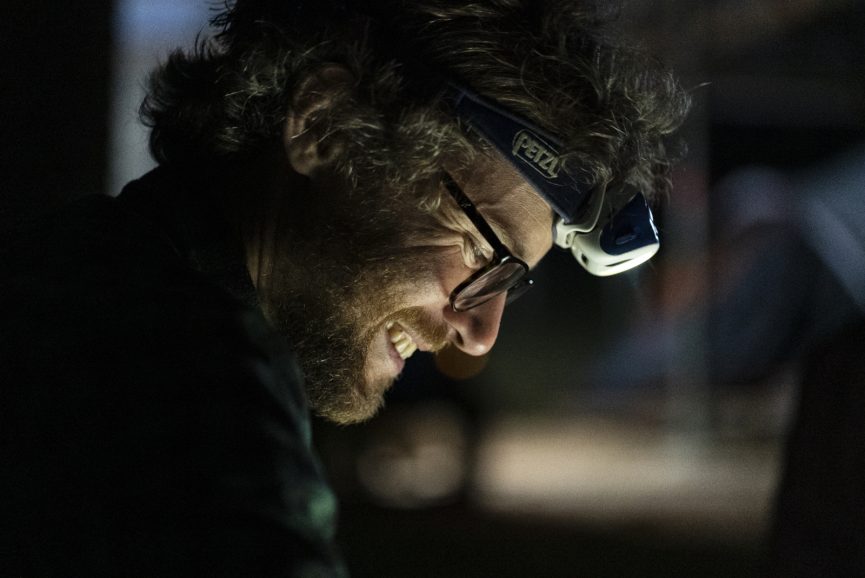
They would follow the chimps all day. They might be up a tree eating figs for hours but the crew would have to be ready for the moment they would all come down and bolt through the forest. “You’ve got to try and keep up with them,” he relates. “It’s all about being there for the behaviour as it happen.
Ngogo is unique in housing two habituated groups of chimps so there are intergroup encounters that are possible to film. During the 18 month shoot there was a battle between the two groups which the team was lucky enough to film. When we started filming this was the ‘holy grail’ in story terms, but the chimps of Ngogo delivered beyond what we could possibly have storyboarded.”
He explains that a lot of the time in natural history filmmakers have a sequence in mind, say a mating ritual, and spend weeks on location building towards that. “It is less important who the individuals are or what the subtleties of behaviour are than just capturing that sequence. If you see something else that’s amazing but doesn’t fit the narrative you wouldn’t prioritise it. Chimp Empire on the other hand felt like a fresher approach to wildlife filming. We are going out to see what happens and that was going to be the story.”
One of the few downsides of the C300 for wildlife filming is that it lacks a pre-record (cache) function (it has 3 seconds when shooting on-speed). That meant they shot a lot of material. “You don’t know when the behaviour you want is going to happen. In the first month we didn’t know what the stories were or who the main characters were going to be, nor can you quickly recognise individual chimps. By the end you learn which trees they like to use and you can identify ‘Jackson’ from ‘Miles’ or ‘Christine’ and if you have wrong combination of characters you don’t shoot it.”
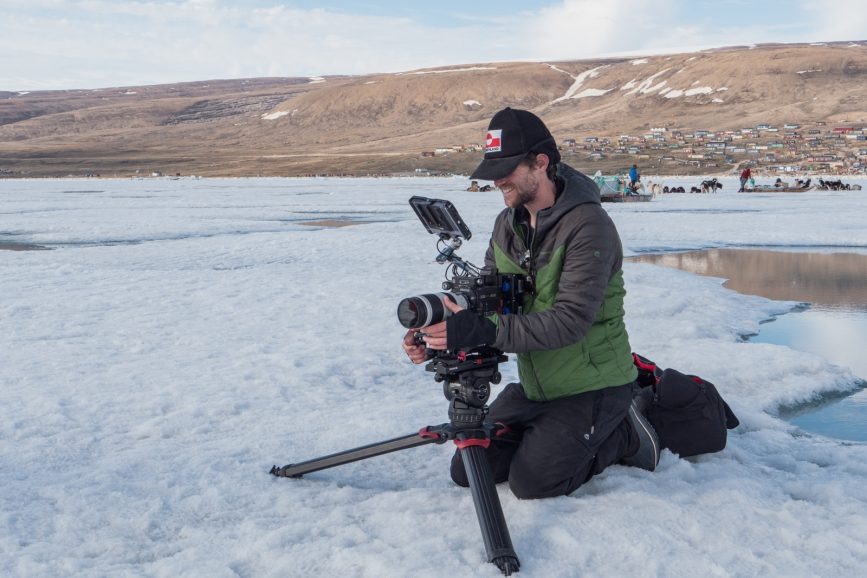
Exposing for a black chimpanzee in the dark forest is extremely tricky. The crew had histograms and zebras to help get the exposure right but it wasn’t easy adjusting for dark forest floor and then intense bright areas of light.
“The dual gain sensor of the C300 has so much latitude for such a small, relatively affordable camera,” Sadd reports. “We had a LUT on the monitor but when we reviewed it back everything looked over exposed. You had this moment of panic that everything was wasted but then you’d check the LOG image in HDR and it’s all in there.”
Shooting in Canon RAW Light gave the postproduction team at Evolutions in Bristol the opportunity to pull detail from the shadows. “After the first shoot we did some grade tests to see what was working and what wasn’t and which ISOs we could push it to,” he says.
The crew also carried a lighter weight Sachtler aktiv8 flowtech75 system capable of payloads of up to 12kg and offering a unique SpeedLevel technology that can be levelled in seconds.
While the kit for this doc was purchased by the production, Sadd himself now owns a Sachtler head and flowtech legs. “I use them for everything now including on recently on a beach filming green turtles where I could get it almost flat to the ground. It’s hard to go back to a traditional tripod after using them.”
One of the field assistants, Diana Kanweri, showed an aptitude for camera work and a lot of material she shot made it into the finished program. She has since landed an internship based in the UK.
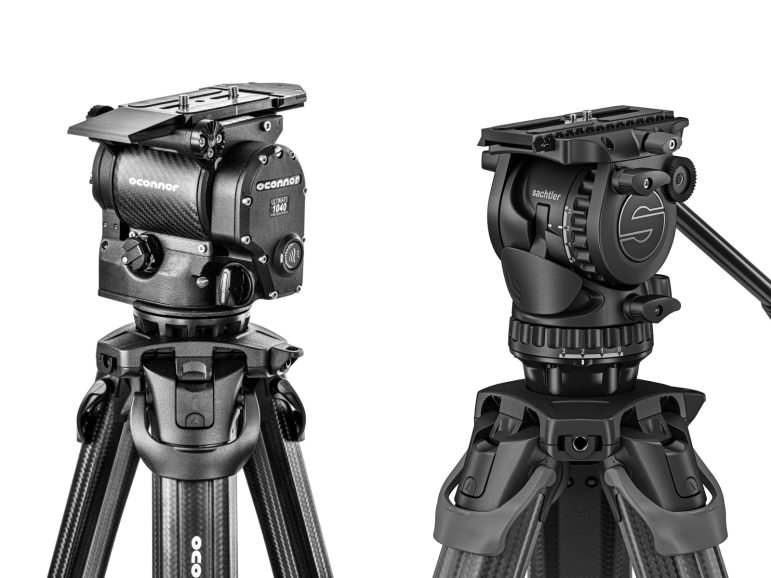
“It’s an amazing success story of empowering local operators and it also benefitted our program since we had someone there all the time when we couldn’t be present to cover behaviour.”
One of the chimps was killed while they were filming (in a fight with other chimps) so he became a key character in the edit. “The archive was suddenly invaluable. We started off very broad, shooting everything, and we narrowed it down which all adds to the authenticity of the show.”
That unexpected death was a standout moment even for field veterans like Sadd. “I’ve filmed different species all round the world and this is the first time I’ve seen a human-like emotional response to something. You can see the other chimps coming over and inspecting the body as if asking ‘what has happened?’”
The team behind Chimp Empire are currently working on a project filming gorillas using the same lens and tripod. The series is also nominated for a BAFTA for Specialist Factual programme.
–
Words by Adrian Pennington
Lead image credit: Phil Streather
This article is sponsored by Videndum





